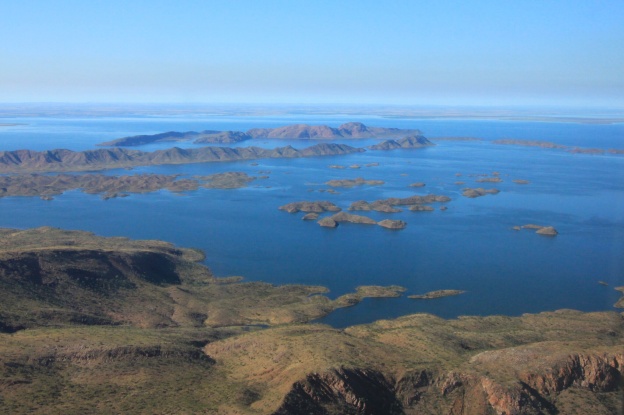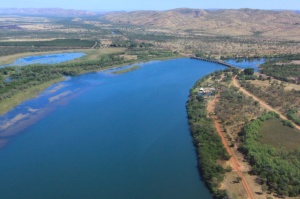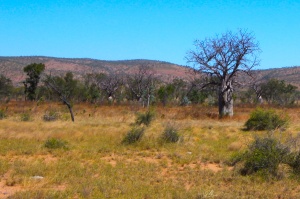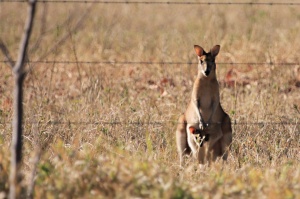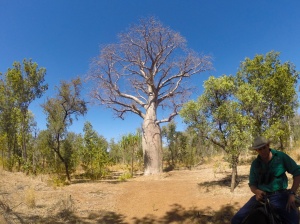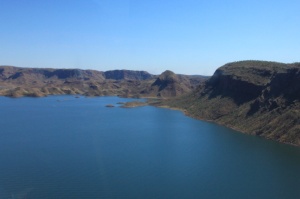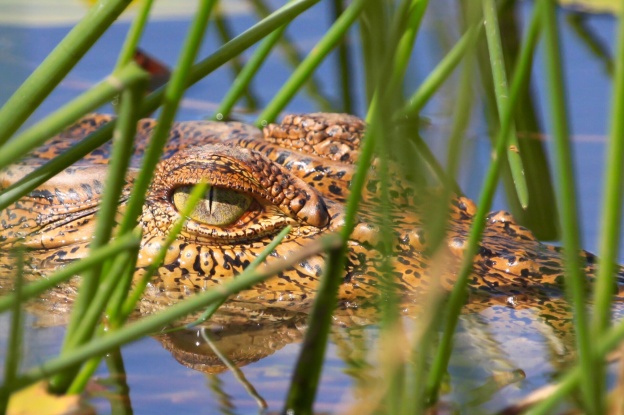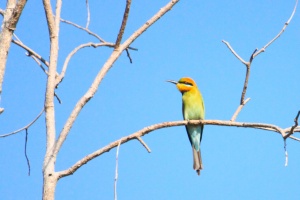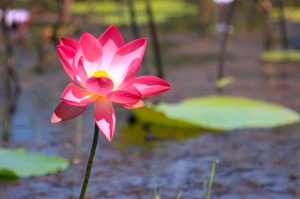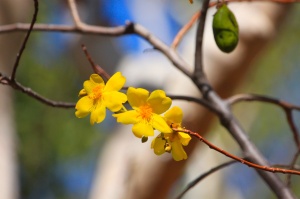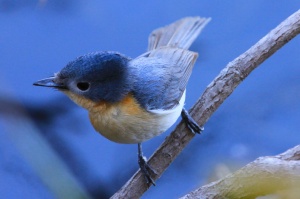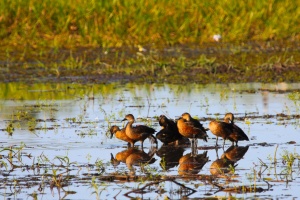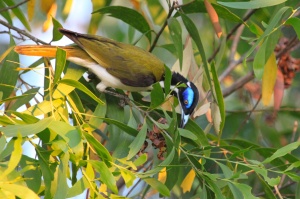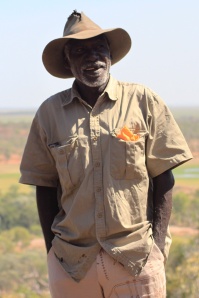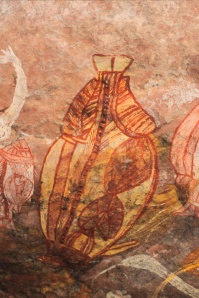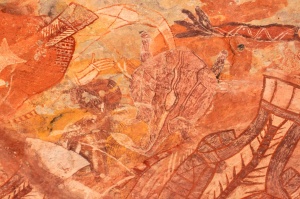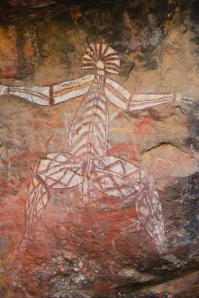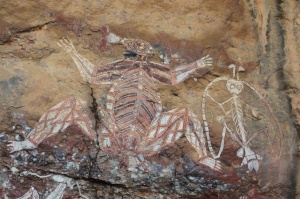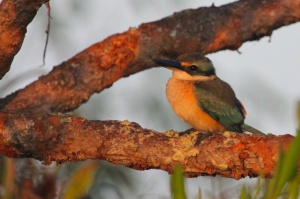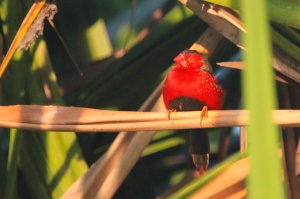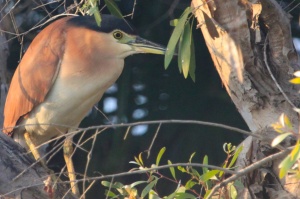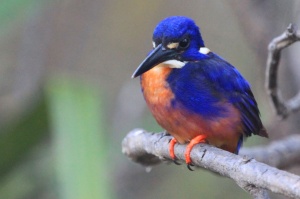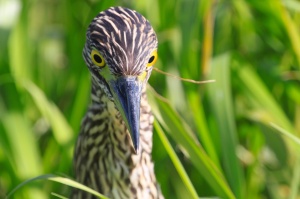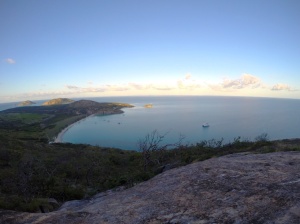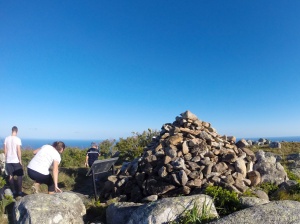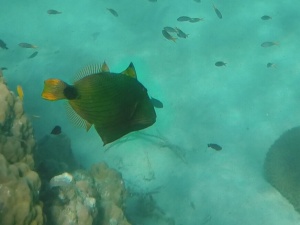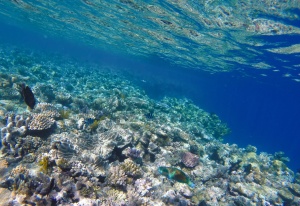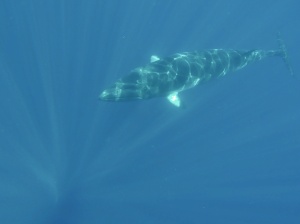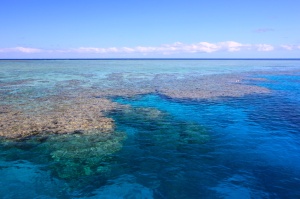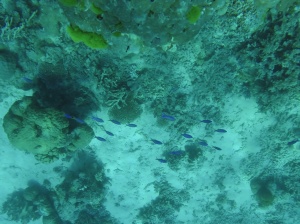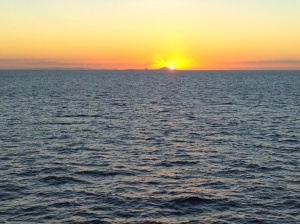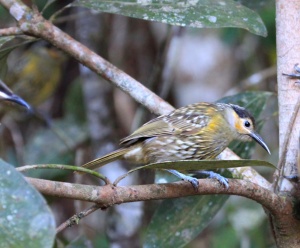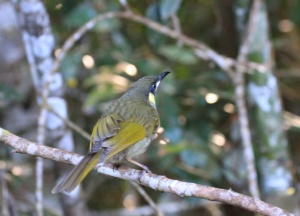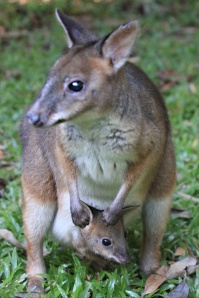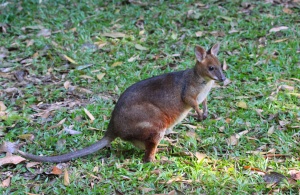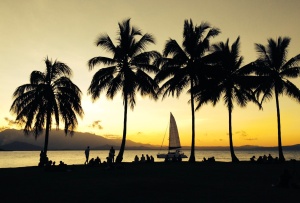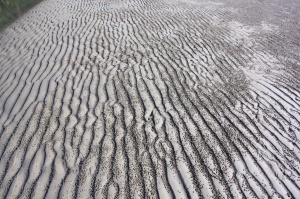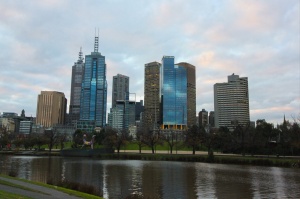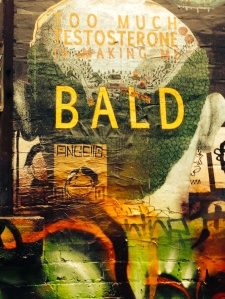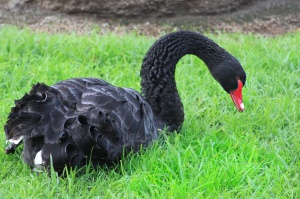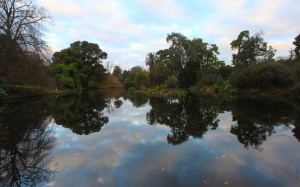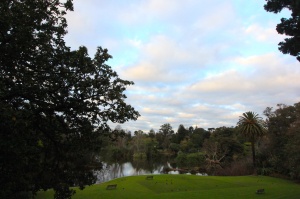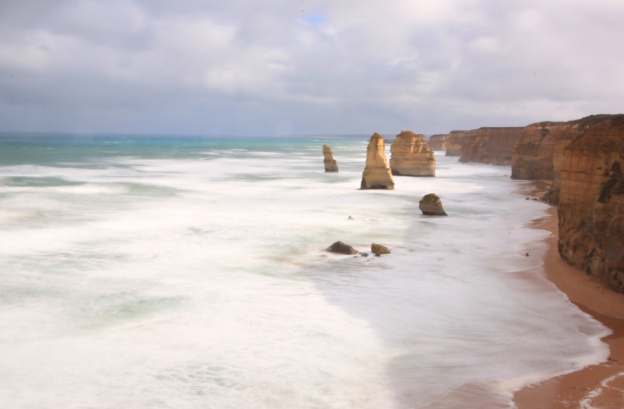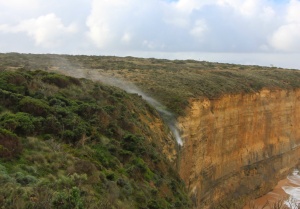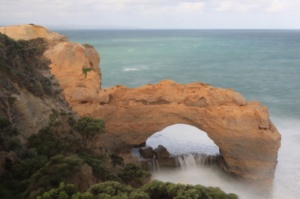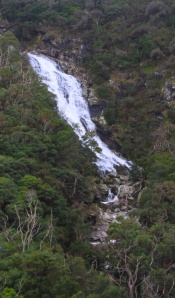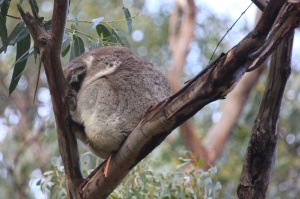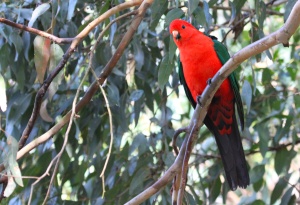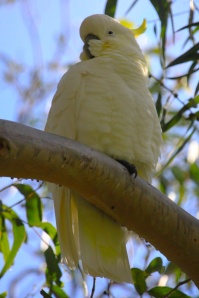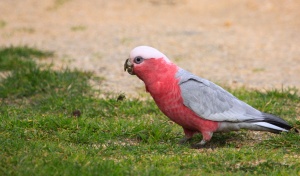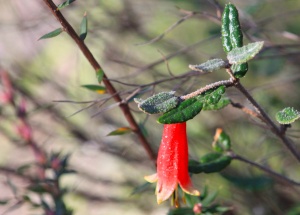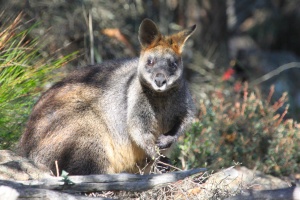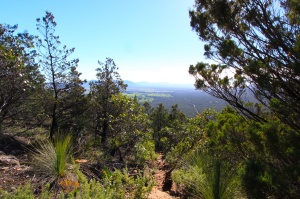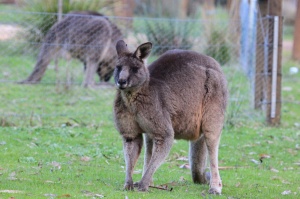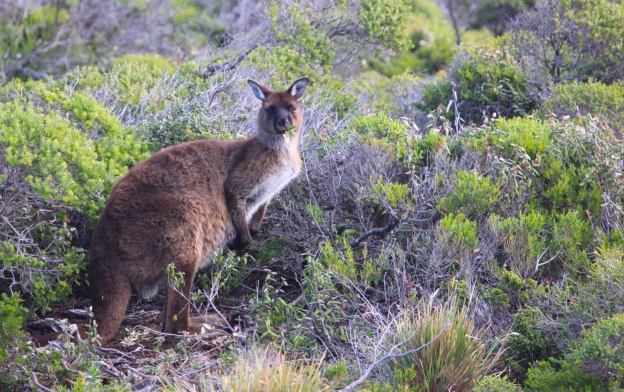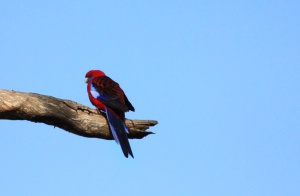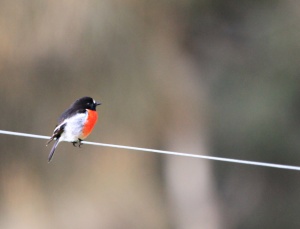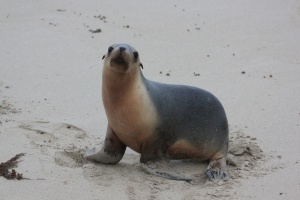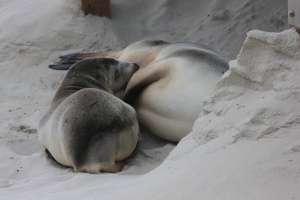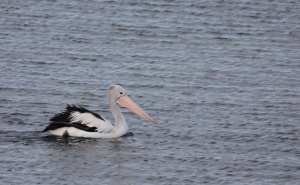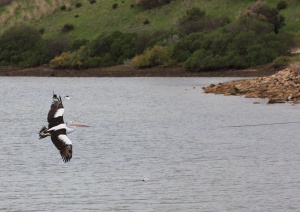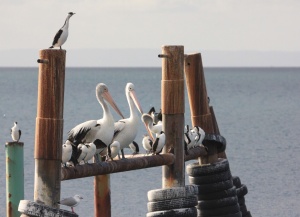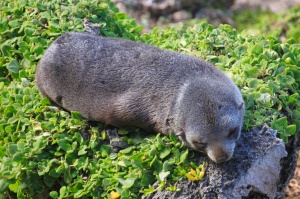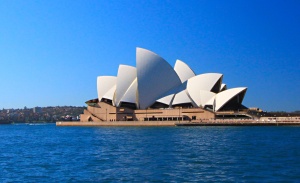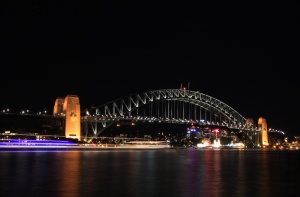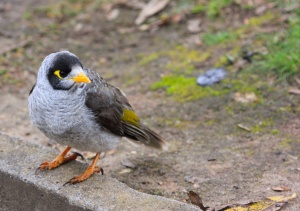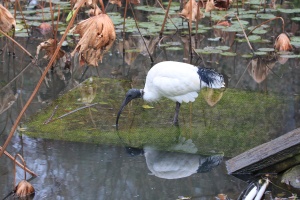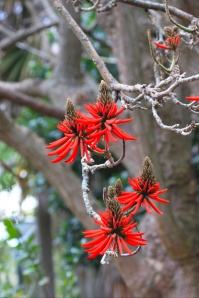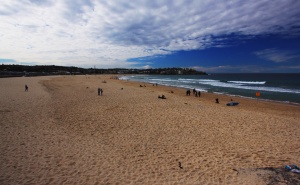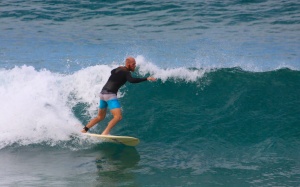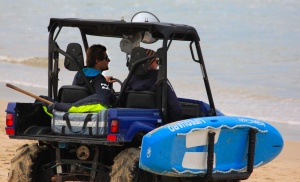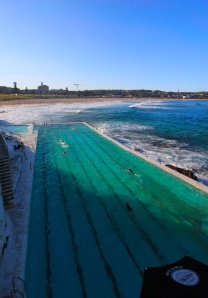After my fantastic trip to Kakadu, I had a short flight to Kununurra. As I took off, I had lovely views of Darwin, and could see how it is surrounded by a maze of inlets. I landed in Kununurra before I took off, as it is in a different time zone. For those who do not know it, Kununurra is more or less in the top left hand corner of Australia.
I collected my small SUV (a Toyota Rav 4), necessary in these untamed parts, and was told which parts of El Questro were off-limits in the hire car (as it did not have a snorkel) and told I was not allowed to drive the car at night because of the danger of hitting wildlife. I set off for the town centre to stock up on water, bananas and muesli bars. I parked outside a cafe called the Mango Cafe where I bought a coffee and a wrap for lunch. I later read good things about it in my guidebook, which were borne out by the tasty coffee and delicious wrap.
I decided to head to El Questro straight after my small shopping expedition. El Questro is a vast, privately owned cattle station which has been developed for tourism to give people a taste of life in the Outback.
As I left Kununurra, I drove across the Diversion Dam, which holds back the Ord River. I was held up for roadworks so had plenty of time to admire the view. As I drove on, I could see the scenery of the East Kimberly. Rocky red escarpments, dry yellow grass and gorgeous, bottle shaped boab trees, topped by the bluest of skies. In winter boabs shed their leaves to reveal their distinctive shape. I say winter, but it is a warm 31 degrees, and the sun is strong enough to burn the foolish who forget their sunblock.
After stopping for a couple of boab pictures and to eat my lunch, I turned onto the infamous Gibb River Road. It was rather a relief to discover that not only is it paved all the way to the El Questro turn-off, it is quite tame at this time of year in that I did not have to cross any flooded sections.
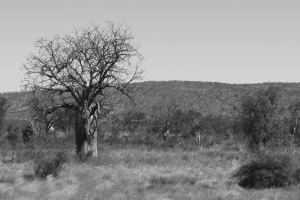 After the turn off I was on an unpaved road, and almost immediately got a scare when a people carrier going in the other direction took a corner too fast and fishtailed in my direction. Adrenaline pumping, I drove on without further incident, admiring the scenery. In a few places where there is more water the dry grass gives way to green palms and pandanus trees. After fording my third river, I arrived at the station township. This consists of a large campsite, a bar, a shop, a rather nice restaurant and a few little bungalows, one of which was to be my home for the next few days. I was in Insect, which was rather nicer than its name implies. It is a room with a nice balcony over-looking the river behind, with a shower room.
After the turn off I was on an unpaved road, and almost immediately got a scare when a people carrier going in the other direction took a corner too fast and fishtailed in my direction. Adrenaline pumping, I drove on without further incident, admiring the scenery. In a few places where there is more water the dry grass gives way to green palms and pandanus trees. After fording my third river, I arrived at the station township. This consists of a large campsite, a bar, a shop, a rather nice restaurant and a few little bungalows, one of which was to be my home for the next few days. I was in Insect, which was rather nicer than its name implies. It is a room with a nice balcony over-looking the river behind, with a shower room.
After settling in, I wandered back to reception to see about the activities on offer. After expressing an interest in riding, I let Christian, who leads the rides, talk me into an all day ride. He eyed my unlovely body and pronounced me plenty fit enough to ride all day.
After agreeing to do the ride, I decided to go for a little drive. After about 15 minutes, I noticed it was starting to get dark (just before 5!) so I turned around and went back, owing to those restrictions in my car hire contract. I headed for the bar, where over a gin and tonic I began to worry about my plans for the following day. I had booked myself on a scenic flight over Lake Argyle and the Bungle Bungles. I had opted for the afternoon flight, thinking that the morning flight would involve driving before dawn, but the one and a half hour time difference just 800 kilometres from Darwin meant dawn was around 5 am and dusk around 5 pm.
The following day the receptionist told me the flight was two hours, not three as I anticipated. I drove to the El Questro resort of Emma Gorge, about 20 minutes away, feeling reassured.
The walk at Emma Gorge takes about an hour to get to the lovely pool at the end. It is more or less flat, but is quite rocky and involves some scrambling over rocks and a stepping stone river crossing. About 15 minutes into the walk I came across a large brown snake asleep under the lip of a rock. As I paused to look at it, a tour group caught me. This was helpful as their guide identified the snake as an olive python.
As I continued, I started chatting to Barbara, a lovely former South African who had been in Australia for more than 30 years without losing her accent. We came first to a beautiful blue green pool, before heading on to the larger pool at the end of the walk. Flanked by red cliffs, and with a thin waterfall on one side, it is well worth the walk, although the water of the pool is icy. I decided against a swim as I had to drive on to Kununurra for my flight and did not want to do so while wet. I headed back to the car, having a nice chat with Barbara on the way.
I drove on to Kununurra, and returned to the Mango Cafe for lunch. While there, I picked up a flyer for Kimberly Air Tours and saw that sure enough, my flight was three hours long, so would finish just as it started to get dark. I went to the dock to tell them I would not be able to do the flight, only to eventually discover that the flight was leaving from the airport, and not the dock as they had told me. I had a discussion with one of the owners, which was a little awkward as he is the nephew of a friend of mine, and he tried hard to convince me to do the flight, but I was really not comfortable breaching the terms of my agreement with the rental agency, which would see me driving without insurance at the time of day I was most likely to run over some wildlife. Eventually we swapped to a morning flight on the day I was leaving.
I drove straight back to El Questro, but was feeling the effects of the motion sickness tablet so had to have a little sleep. Once I perked up, I headed to the bar for a veggie burger and to listen to the open mike night. They have a resident singer, who sang a few songs before opening the floor to anyone else who fancied a go. Immediately a guy stood up with his bag pipes. He was really good, rather to my surprise. After him, a young boy of about thirteen came forward and told us he would sing but first his brother would do a song about Harry Potter. His little brother then performed a little rap summarising the Harry Potter books, before his brother sang and played the guitar. At first he was nervous and went wrong, but encouraged by a sympathetic crowd he sang quite beautifully. As the evening wore on, we heard from a lot of talented people. As someone who cannot carry a tune in a suitcase, I am always impressed by those who can. Afterwards I had another chat with Barbara and met her sister. We discovered that her grandchildren go to the school where my sister teaches in Johannesburg.
The day of the horse ride dawned and I set off to the stables. Joining me on the ride were 21 year old Brooke and 12 year old Georgia. After I made friends with my horse, Sajit, I hauled myself on (increasingly a challenge for my inflexible joints) and we set off through the campsite and across the river. Christian first showed us a beautiful and ancient boab, and then the nest of a bower bird. The male makes a lovely nest, about a foot tall, with an arched top. He then decorates his building work to attract the ladies. This one had collected scores of tea lights from the camp, as well as some bits of green glass, all carefully arranged in front of his nest.
We rode on, eventually coming to Zebedee Springs, where we stopped for lunch. After lunch, we changed and went to soak in the springs. They are naturally warm pools that flow down through the palm trees. While Brooke and Georgia explored the various pools, I just sat and relaxed in the top pool, which is just deep enough to sit in up to your neck. The pools are beautifully clean, shaded by palms, and do not have the sulphurous smell that often accompanies hot springs. Just the thing after hours of riding.
After that relaxing soak, we got back on our horses and rode back to the stables, having a few little canters along the way. Christian worked with Brooke on her cowgirl skills as we went, teaching her to do a one rein stop and back her horse up. At the end of the ride, Christian’s one year old daughter sat on my horse, grinning a gummy and delighted grin as she posed for photos with her mother. After the ride, Brooke and her grandparents invited me to join them for dinner.
After my ride I took a quick snap of the beautiful blue eyed little corellas which roost in high the trees all around the station township before jumping in the shower. Unfortunately I did not have a proper camera at the stables, as they were all around there. Their raucous dawn chorus ensures no one sleeps in past about 5.30 at El Questro.
Dinner that evening was a barbecue at the outdoor bar, with live music from El Questro’s resident musician. I had a really nice evening with the delightful Keogh family.
The following day I got up early to check out and head to Kununurra for my morning flight over the Bungle Bungles and Lake Argyle. At the airport, we were met by our pilot and guide, this time not my friend’s nephew. We loaded into the plane and took off. Unfortunately my view was obstructed by pieces of the plane, so I did not get the best pictures. We flew over the farms that surround Kununurra and then on to Lake Argyle. The lake is the result of damming the Ord River to provide irrigation for the farms. It has created one of the world’s largest man-made lakes, which is home to 30,000 freshwater crocodiles, although I did not see any.
After flying over the lake, we flew over the Bungle Bungles, an amazing range of sandstone mountains which have be been eroded by wind and rain into domed shapes. Their stripes are the result of oxidisation and algae growth. The range was only “discovered” by white fellas in 1983, but is now an increasingly popular tourist attraction, although only a small part of it is accessible by road.
We then flew back to Lake Argyle via the Argyle Diamond Mine. The mine is famous for its coloured diamonds and is one of the largest employers in the area. The mine is a town in itself. In particular, it is famous for its pink diamonds, but it also produces champagne diamonds. It is a really clever marketing trick to give them a fancy name and call them rare and therefore valuable, as to me they just look like dirty diamonds!
We landed on Lake Argyle and cruised to a small island to have a cup of tea. While we stood on the beach, several large Australian pelicans glided past on the lake. After a couple of take offs and landings on the lake, we returned to the airport. Before my afternoon flight back to Darwin, I just had time to go looking for birds around the fringes of Lily Creek Lagoon. There were lots of little finches and rainbow bee-eaters.
I have loved this part of the country. The remoteness, the scenery and the boabs – even the noisy corellas – and I wish I could have had another few days here. I was not even all that stiff after my ride! I even loved my 4WD. Who would have thought this city girl would be happier in a 4WD than a convertible? It is a good thing that I am so excited about Borneo as I am really sorry to leave Australia behind. I have caught up with friend, met some lovely people and seen many amazing things. I will miss it.

